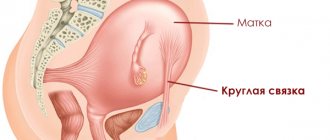Category: Medical News
The most common method for identifying diseases of internal organs and joints, confirming the fact of pregnancy and determining the state of fetal development is ultrasound diagnostics. Many patients ask questions: how often can an ultrasound be done, is it dangerous to health, how to prepare for the procedure, and many others.
Ultrasound during pregnancy. Diagnostic features
The most accurate answer to pregnant women’s question about how often ultrasound can be done is provided by legislation. The procedure is mandatory for all women who declare pregnancy.
No doctor will work without ultrasound, and there are several reasons for this. Diagnostics allows you to reliably establish the fact of pregnancy. This is necessary not only to assess the condition of the fetus and the expectant mother, but to obtain benefits for pregnant women and documents required for maternity leave.
How often can you have an ultrasound scan during pregnancy? Standards indicate that with normal development, three times are sufficient: one in each trimester. More frequent use of ultrasound is relevant in cases where abnormalities in the development of the fetus occur or something threatens the health of the expectant mother. Experts assure: research, if carried out in accordance with the rules, is not harmful.
The pulse mode in which the device operates significantly reduces the time of exposure to waves. In addition, when reflected from the underlying tissues, they lose their strength even more. However, this does not mean that the research can be carried out at your own discretion. In recent years, an unhealthy “fashion” has spread in some cities: to film the scanning procedure as often as possible in order to observe the development of the fetus in the family circle.
Pregnant women try to get scans very often, some every week. Such interference is, of course, harmful. There is no data on the negative effects of ultrasound on the fetus, but if diagnostics are carried out frequently, you can simply injure the fetus or its mother.
How often can the procedure be done?
Considering that the price of ultrasound diagnostics is low, it can be performed as often as desired. But does this make any practical sense? After all, the number of procedures does not affect the accuracy of the diagnosis. This is why the frequency of ultrasound is determined solely by the attending physician, who always prescribes the optimal number of sessions.
As already mentioned, if all the rules are followed, the procedure is safe for the body. Even if you conduct several sessions in a short period of time, nothing bad will happen. That is why ultrasound, unlike X-rays and CT scans, has no contraindications. It is well tolerated even by small children and pregnant women.
To confirm the fact that ultrasound is harmless, it is worth paying attention to what the doctors are wearing. Radiologists wear lead aprons and other protective equipment; ultrasound doctors do not wear protective uniforms, although they are exposed to ultrasound throughout the entire working day. Healthy people are recommended to undergo an ultrasound scan at least once a year. Pregnant women perform the procedure three times during their pregnancy.
Types and timing of ultrasound diagnostics
To perform ultrasound, doctors use two types of sensors: transvaginal and transabdominal. The first is used at the earliest stages. In this case, the sensor is inserted into the vagina. With its help, you can establish 2-4 weeks of pregnancy.
The second is used at a later date. The doctor moves this sensor over the woman’s abdomen. In both cases, the diagnostician uses a special gel. It is needed in order to strengthen the contact between the sensor and the abdomen or vagina. Pregnant women often ask: is it harmful to use this gel?
The answer is clear: the safety of the gel has been confirmed by the Ministry of Health. This composition is chemically neutral and contains nothing except substances that enhance the sliding of the sensor. There is no harm in using it and it is absolutely safe.
Typically, ultrasound diagnostics are performed at certain stages of pregnancy:
- 4-7 weeks. This is not a planned study, but a fact of establishing pregnancy. All subsequent ultrasounds are performed as planned.
- 10-14 weeks.
- 20-24 weeks.
- 32-34 weeks.
- Prenatal ultrasound diagnostics. It is carried out according to special indications, it is not planned.
If your pregnancy has complications, your doctor may prescribe an additional ultrasound scan. There is no need to worry about it being harmful. There is no data on the negative impact of ultrasonic waves on the fetus, and timely diagnosis will only help a woman give birth to a healthy baby.
The procedure does not require any preparation. Usually, if the patient wishes, a printout of the most “beautiful” frames can be made, and some clinics often record a video or demonstrate the entire procedure not on a monitor, but on a large screen.
Photos do not always turn out interesting for a home album: the fetus does not know how to pose, it can turn away. Therefore, you can take dad for an ultrasound if he is interested in what the unborn baby looks like. At the very beginning of pregnancy, he and the diagnostician can examine the tiny person, and at a later stage - all parts of his developing body.
The most modern clinics offer not the usual three-dimensional ultrasound, which gives a static image, but a 4D ultrasound, which allows you to observe the movement of the fetus and record it on video.
Description of the procedure
During such diagnostics, ultra-frequency waves penetrate the human body, and since each tissue of the body has its own acoustic resistance, they are absorbed or reflected. As a result, the image on the ultrasound machine display shows different environments darker or lighter. To study a particular organ, its own wave parameters are used. For example, to examine the thyroid gland, a frequency of 7.5 MHz is used, and the diagnosis of abdominal organs requires 2.5-3.5 MHz. Everything is based on the properties of tissues located in a certain location.
During the ultrasound procedure, slight heating of the tissues occurs, but this occurs in such a short period of time that it does not affect the condition of the body in any way and is not felt at all by the patient. Ultrasound examination is performed using a special scanner. The working part of the device consists of a source and receiver of high-frequency waves. The source emits them, then reflection or absorption occurs from tissues and organs. The receiver catches the waves and transmits them to a computer, where they are interpreted into a picture of a tissue “cut” in real time.
With the help of modern technologies, both two-dimensional and three-dimensional images can be obtained in appropriate institutions. Cardio Plus Medical Center has the most modern equipment, which allows for error-free diagnosis. In addition, the clinic can provide consultation with specialists.
Before starting the ultrasound, the patient is asked to partially undress and then lie down on the couch. During the ultrasound examination, the patient lies down, periodically changing body position at the request of the doctor. Diagnostics is carried out with a portable sensor, which the specialist presses firmly but lightly to the skin. Gynecological ultrasounds use a transvaginal probe, which is inserted into the vagina. Examinations of organs that are performed through the rectum require the use of a transanal receiver.
To improve the movement of the sensor over the skin and the transmission of sound waves, the body and the receiver itself are lubricated with a special hypoallergenic water-based gel. Ultrasound is completely painless, only slight discomfort may be caused by the pressure of the device and the feeling of cold from the gel.
The main tasks of ultrasound at different stages
The purpose of the very first scan is to establish the fact of pregnancy. At the same time, it is already possible to assess the duration of pregnancy, the condition of the placenta, the correctness or incorrectness of the position of the fetus. The doctor measures the embryo and compares the data with the standards. If any abnormalities are detected, the diagnostician has the right to prescribe an additional ultrasound without waiting for the start of the next trimester. It is not harmful to either mother or baby.
The second, scheduled scan is usually carried out at 10-14 weeks. If a pregnant woman first consulted a doctor at 7-10 weeks, then this examination can be skipped if the pregnancy is developing normally.
At this stage, it is already possible to measure all the necessary parameters, establish the expected due date, and assess the condition of the fetus and mother. Ultrasound at this stage allows you to determine whether the fetus has chromosomal diseases. This is how Down syndrome and hydrocephalus are clearly defined. The same study reveals possible pathologies of the pregnant woman: placental abruption, tubal pregnancy, etc.
At 20-24 weeks, the fetus is already fully formed, and the doctor has the opportunity to assess how correctly all its systems are functioning. Ultrasound also allows you to detect existing intrauterine infections, if any, and prescribe timely treatment.
At 32-34 weeks, ultrasound can detect fetal malformations and abnormalities in the functioning of its internal organs. Usually at this stage, diagnosticians use Doppler sonography, which allows them to assess the fetal heartbeat, pulsation in the umbilical cord, and the condition of the placenta.
All deviations detected at this time can be corrected, if necessary, with the help of medications. Timely detection of abnormalities allows, by influencing the fetus in utero, to prevent mental and physical defects after birth.
It is not harmful to do an ultrasound immediately before childbirth. The scan will help assess the weight of the fetus, its position, well-being, and the condition of the birth canal. It is very important to know in advance whether the baby is entwined with the umbilical cord and how the size of his head corresponds to the size of the birth canal. Ultrasound very accurately determines the readiness of the uterus for childbirth. Such a study allows you to draw up a birth plan that takes into account all possible problems and determine in advance ways to solve them.
Obtained results
An ultrasound examination of a pregnant woman includes examination of the uterus with the fertilized egg inside, fallopian tubes, and ovaries. If necessary, an examination of the kidneys, bladder, and cervix is prescribed. Ultrasound shows pathologies on the part of the fetus and the maternal body.
The fact of pregnancy is confirmed by the detection of a fertilized egg with an embryo inside the uterine cavity. The fertilized egg in the picture is represented by a rounded gray spot with light and dark inclusions. It is located on one of the uterine walls. The image does not show intrauterine pregnancy if the fertilized egg is attached inside the fallopian tube or in the abdominal cavity.
Ultrasound results for certain weeks of pregnancy:
- 4 weeks - an embryo is detected inside the fertilized egg;
- Week 10 - major organs are formed, genetic abnormalities can be identified;
- Week 20 - determination of anomalies of internal organs and skeleton;
- 30 week - fetal position, developmental defects.
From the third month, all parts of the embryo’s body are visible inside the fertilized egg. The largest spot is the head. The smaller elongated spots are limbs on which fingers are visible.
| Index | Characteristic |
| Fetus | Quantity, transverse or longitudinal position |
| Presentation | Pelvic or head |
| Fetometry | Size of head, torso, limbs |
| Collar width | Determined at 12 weeks - no more than 3 mm |
| Heart rate | Normal - 110-180 per minute |
Deviations in the development of pregnancy are detected at any stage.
- False pregnancy. A fertilized egg is formed, but there is no embryo inside it. It can be determined from 10-12 weeks. Inside the light gray spot in the picture there is a black space instead of white-gray inclusions.
- Bubble drift. Anomaly in the development of membranes. The picture shows many dark bubbles in the place where the embryo should be.
- Down syndrome. The earliest time for determination is 12 weeks. A sign is a thickening of the collar area of more than 3 mm. At week 20, the syndrome is determined by the length of the nasal bone.
- A marker of IUI (intrauterine infection) is an insufficient amount of amniotic fluid.
- Placenta previa is its location at the uterine os. The photograph shows an oval dark spot in the throat area to which the fetus is attached. Occurs due to multiple scars on the uterus.
- Cervical insufficiency. Determined by its shortening of less than 12 mm.
- Umbilical cord entanglement. The photo shows a dark tourniquet around the child's neck.
- Defects of the heart, limbs, brain.
The specialist conducting the examination provides a description of what he saw. A diagnosis cannot be made based on this conclusion alone. A sonologist can make a mistake for a number of reasons. Visualization of the uterus can be difficult due to the patient’s obesity and excessive gas formation. The child may lie in such a way that his position seems pathological.
After the procedure, you should contact a gynecologist so that he can confirm or rule out the detected pathologies. Often it is necessary to perform ultrasound in dynamics. During pregnancy, the fetus turns several times, and by birth it takes the desired position. If chromosomal abnormalities are suspected, a woman is recommended to consult a geneticist.
Ultrasound during pregnancy is important
Summarizing what has been said, it can be argued that ultrasound during pregnancy
- Not only is it not harmful: it brings real benefits to the mother and fetus.
- Allows you to determine the number of children being carried at the earliest stages.
- Determines the presence of an ectopic pregnancy in a timely manner.
- Accurately “calculates” the “age” of the child being carried.
- Determines the presence of pregnancy defects in a timely manner. This is especially true if the pregnant woman worked in hazardous industries, lived in environmentally unfavorable areas, often experienced stress, or suffered from chronic or acute diseases.
- Allows you to determine the presence or absence of pathology in the unborn child.
- Determine the baby's gender in advance.
- Prepare a woman in labor for a successful birth, taking into account the characteristics of her body and the baby’s body.
- Enables the doctor to not act blindly.
When is an ultrasound performed if a woman does not know the date of her last menstruation?
Surely everyone knows that the gestational age is determined by gynecologists based on the first day of the last menstruation. However, it is not always possible to calculate this date. If a woman has had severe disruptions in her cycle or is breastfeeding, then at what time should ultrasound examinations be performed?
As soon as a representative of the fair sex receives a positive pregnancy test result, the doctor sends her for examination. In this case, what time is indicated by ultrasound. Based on this, subsequent dates for diagnostic procedures are calculated.
Is it possible, useful or harmful?
Discussions about the harmfulness of ultrasound during pregnancy have been going on for a long time (more than 30 years), and this is the best evidence that its harmfulness has not yet been proven, since not a single evidence of the negative effect of ultrasound on the development of the fetus has been found. But we should not forget that doctors and scientists are not gods, and many secrets still remain a mystery even to them. Therefore, when asking yourself whether ultrasound is harmful, remember that its benefits have been scientifically proven and will help you avoid or eliminate many problems in time. However, you should not take this procedure too lightly; this examination should be carried out only as prescribed by a doctor and have a specific diagnostic purpose.










